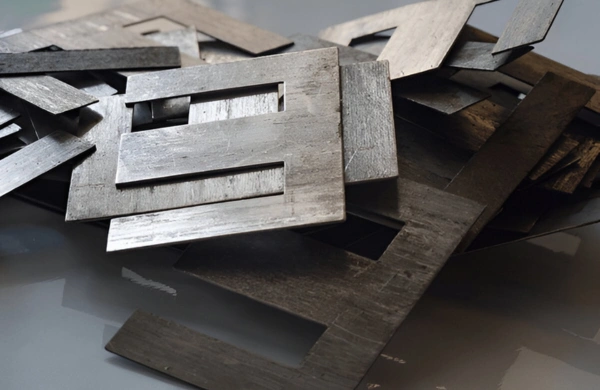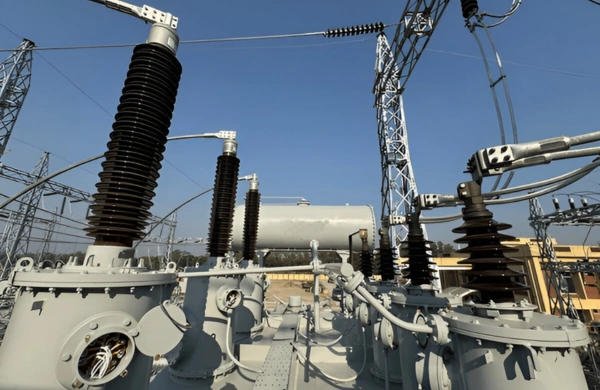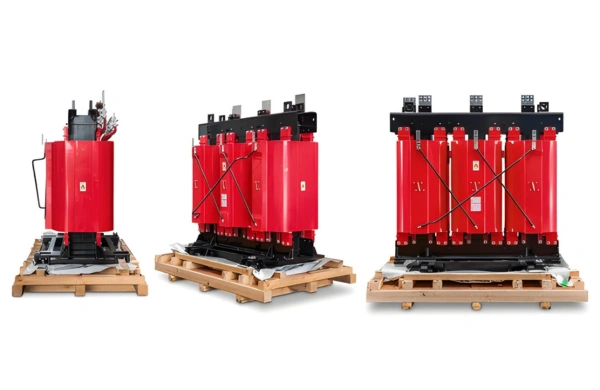Introduction
Compact, durable, and cost-effective—EI lamination transformers remain one of the most widely adopted transformer types across industrial, commercial, and control applications. Their unique laminated steel core structure provides a balance of performance, manufacturability, and affordability.
From control circuits and lighting systems to audio devices and low-power industrial equipment, EI transformers are designed for consistent voltage regulation, low magnetic losses, and reliable long-term operation. As the demand for efficient, compact transformers grows across North America, manufacturers are innovating in core material technology, automated assembly, and insulation systems to enhance efficiency and thermal stability.
Know About EI Lamination Transformers: Compact and Cost-Efficient
This blog explores how EI lamination transformers are built, what makes them cost-effective, and why Zetwerk’s advanced manufacturing capabilities are helping OEMs achieve precision-built, UL-compliant solutions at scale.
1. What Are EI Lamination Transformers?
The term “EI lamination transformer” refers to the construction style of its magnetic core. The core is made up of thin steel sheets—laminations—shaped like the letters “E” and “I”, stacked together to complete the magnetic path.
This design provides several operational advantages:
- Reduced Eddy Current Losses: Laminations are individually insulated, minimizing current loops and heat generation.
- Ease of Assembly: The E and I segments can be easily stacked, allowing for efficient manufacturing and simplified repair.
- Mechanical Stability: The interlocking structure reduces vibration and mechanical stress.
- Compact Design: The rectangular cross-section allows for efficient space utilization in compact enclosures.
The result is a versatile transformer suited for a wide variety of voltage conversion and isolation applications in both industrial and commercial environments.
2. Core Materials and Magnetic Efficiency
The magnetic core of an EI lamination transformer directly affects efficiency, weight, and thermal performance.
a. CRGO Steel Laminations
Most modern EI cores are made from Cold Rolled Grain-Oriented (CRGO) silicon steel, chosen for its high permeability and low hysteresis loss. The steel’s grain orientation aligns with the magnetic flux, ensuring minimal energy loss during magnetization cycles.
b. Amorphous Metal Cores
Some manufacturers are now adopting amorphous alloy materials for higher efficiency. These non-crystalline materials can reduce no-load losses by up to 70% compared to conventional CRGO laminations.
c. Lamination Thickness and Coatings
Standard lamination thickness ranges between 0.23 mm and 0.35 mm. Each sheet is coated with an insulating oxide layer to prevent eddy current circulation between adjacent laminations.
Zetwerk employs automated punching and stacking processes to achieve precise lamination tolerances, reducing air gaps and improving overall magnetic efficiency.
3. Winding Design and Insulation Systems
The windings in EI transformers are engineered to provide the required voltage transformation ratio while maintaining dielectric strength and temperature resilience.
a. Winding Material
- Copper Windings: Provide high conductivity, better thermal performance, and longer life.
- Aluminum Windings: Offer cost benefits and lower weight when space and cost are key design considerations.
b. Winding Arrangement
Windings are typically layered concentrically around the core limbs. Proper interleaving minimizes leakage inductance and improves voltage regulation.
c. Insulation and Protection
Manufacturers use Class F (155°C) or Class H (180°C) insulation materials like Nomex, Mylar, or polyester film to prevent breakdown under heat and voltage stress.
Transformers undergo Vacuum Pressure Impregnation (VPI) or epoxy coating for superior dielectric strength and mechanical stability.
Zetwerk integrates these processes in-house—ensuring consistent impregnation quality, reduced vibration noise, and improved long-term reliability.
4. Performance Characteristics
The operational performance of an EI lamination transformer depends on its design geometry, materials, and cooling efficiency.
| Parameter | Typical Range / Characteristic | Significance |
| Voltage Regulation | ±3–5% | Maintains stable secondary voltage under load variations |
| Efficiency | 90–98% depending on rating | High magnetic efficiency reduces energy waste |
| Noise Level | <40 dB for small units | Achieved by resin impregnation and tight clamping |
| Temperature Rise | <80°C above ambient | Ensures long life under continuous operation |
| Frequency Range | 50 / 60 Hz standard | Suitable for global power systems |
These parameters make EI lamination transformers ideal for industrial automation, audio amplifiers, HVAC systems, control panels, and low-power distribution.
5. Applications Across Industries
a. Industrial Automation and Control Systems
Used to power PLCs, relays, and instrumentation circuits requiring consistent, isolated low-voltage supply.
b. Lighting and HVAC Systems
Provides reliable power conversion in lighting control circuits, ventilation systems, and commercial building panels.
c. Audio Equipment
EI transformers are favored for their natural magnetic stability and low distortion in amplifiers and studio equipment.
d. Renewable Energy and EV Infrastructure
Compact and efficient designs support control and monitoring systems in solar inverters and EV charging units.
e. OEM Equipment Manufacturing
Zetwerk partners with North American OEMs to design EI lamination transformers customized for power ratings, enclosures, and mounting configurations specific to end applications.
6. Manufacturing Process and Quality Control
Leading manufacturers employ precise production and testing techniques to ensure electrical and mechanical reliability.
- Core Lamination and Stacking:
CRGO sheets are precision-stamped, deburred, and stacked under uniform pressure to maintain magnetic continuity. - Coil Winding:
Automated winding machines ensure consistent turns ratio, reducing electrical imbalance and stray losses. - Varnish Impregnation / Epoxy Coating:
Enhances insulation, noise suppression, and mechanical rigidity. - Assembly and Clamping:
Properly tensioned clamps prevent lamination vibration and acoustic noise. - Electrical Testing:
Includes tests for no-load loss, load loss, insulation resistance, dielectric strength, and polarity verification. - Final Quality Inspection:
Dimensional checks, terminal verification, and marking are performed before packing for shipment.
Zetwerk’s facilities combine automated lamination lines with ISO-certified quality control, ensuring every transformer meets UL 506 and CSA C22.2 requirements for North American markets.
7. Key Advantages of EI Lamination Transformers
- Compact Size and Cost Efficiency: Economical to produce and maintain.
- Ease of Customization: Core sizes, voltages, and mounting options easily tailored for OEMs.
- Low Maintenance: Simple construction reduces long-term servicing costs.
- Thermal and Electrical Reliability: High efficiency and insulation withstand continuous duty.
- Noise Reduction: Laminated construction reduces hum and vibration.
Their balance of performance and affordability continues to make EI transformers the go-to solution for industrial and commercial power applications.
8. Top EI Lamination Transformer Manufacturers
1. Zetwerk Manufacturing USA
Zetwerk designs and manufactures precision EI lamination transformers for automation, HVAC, and control systems. With end-to-end production—from CRGO core stamping to winding and final testing—Zetwerk ensures compliance with UL and CSA standards, offering OEMs faster lead times, scalable production, and strict quality assurance.
2. Triad Magnetics (USA)
Specializes in compact, high-efficiency EI transformers for industrial and consumer electronics with focus on low magnetic leakage and reduced audible noise.
3. Hammond Power Solutions (Canada/USA)
Manufactures standard and custom EI transformers designed for industrial control and energy management systems.
4. Micron Industries (USA)
Produces encapsulated and open-core EI transformers for lighting, control panels, and HVAC equipment.
5. Schneider Electric
Integrates EI lamination transformers within its automation and power management solutions, offering complete system compatibility.
9. Trends and Advancements in EI Transformer Design
The EI transformer segment continues to evolve with materials and manufacturing innovations aimed at improving performance and sustainability:
- Amorphous Core Technology: Reduces no-load losses and carbon footprint.
- Thermally Conductive Potting Compounds: Improve heat dissipation in compact units.
- Automated Testing Systems: Ensure consistent QA through digital traceability.
- Eco-Friendly Varnishes and Insulations: Reduce VOC emissions and enhance recyclability.
- Compact Modular Designs: Support smaller control enclosures and distributed energy systems.
Zetwerk is actively integrating these advancements into its transformer manufacturing lines to help North American customers achieve improved energy efficiency, reliability, and compliance with environmental standards.
Conclusion
EI lamination transformers continue to serve as a reliable, compact, and cost-efficient solution across industries that demand stable voltage conversion and isolation. Their proven construction and adaptability make them indispensable in modern automation, control, and energy systems.
For OEMs and system integrators seeking dependable, UL-certified EI transformers, Zetwerk provides complete in-house manufacturing—from lamination stamping and winding to assembly and final testing. With vertically integrated facilities, strict process control, and quick turnaround times, Zetwerk enables North American companies to meet performance goals while reducing sourcing complexity and total cost of ownership.




FAQs
a. Their standardized laminated design allows easy assembly, lower material costs, and minimal maintenance over time.
a. Cold Rolled Grain Oriented (CRGO) silicon steel is most common; some models use amorphous metal for higher efficiency.
a. They’re used in control panels, lighting systems, automation equipment, and low-power distribution networks.
a. Yes. Zetwerk offers customized VA ratings, winding materials, insulation classes, and enclosures to fit OEM needs.
a. UL 506, CSA C22.2, and IEC 61558 are the primary standards governing EI transformer safety and performance.








